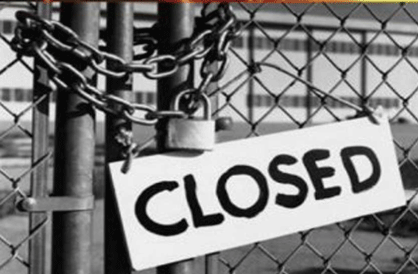LOSSES: Covid-19 has become a conflict between the right to earn a living. While billions have been spent on vaccination, the damage to the economy has been even more horrific. Though vaccines are free they have to be paid for by the government ((public kitty) and in the case of private vaccine centers the minimum cost is Rs780.
By Arvind Pinto
Covid-19 has cost not just the country but the world. Billions of dollars by way of probation for vaccinating the entire population, jobs and production lost, during the lockdown periods and covid-19 protocol of maintaining one meter distance.
AS we move from covid-19’s second wave to the third wave, the country is now on an ambitious drive to ensure that all Indians are vaccinated by the end of the year. It’s an ambitious target but if the country is to get rid of the scourge of this viral pandemic, it is necessary that the majority of the population is vaccinated for what is called herd immunity.
Let us for the time forget our boast of being the pharmacy of the world; having produced so many vaccines that the government generously distributed vaccines to the rest of the world, in order to up the ante with our northern and eastern neighbor China in a game of diplomacy.
The second wave made us realize that vaccination is not a diplomatic giveaway to buy friends, for the old adage charity begins at home should ensure that one vaccinates one’s own people before giving away vaccines for the brownie points of diplomacy.
The economics of vaccinating the population of the country is truly staggering. With all Indians over 18 years of age eligible to be vaccinated, out of a total of 1.3 billion 842 million Indians would be eligible to be vaccinated. To be able to vaccinate the target population the cost would be Rs67,190 crore. In the Budget that was announced in the month of February 2021, there was no provision for purchase of vaccines. However, an amount of Rs 35,000 was allocated as loans/grants to the states in support of the vaccination drive.
With the second wave and the question as to who would be handling the purchase of the vaccines, the Union has now taken the responsibility for the vaccination program. The total cost of vaccinating all adults over the age of 18 will be around Rs45,000-Rs50,000 crore.
Further, the promise of free rations till the month of November will cost the government another Rs1.3 lakh crore. From where will this additional revenue come from? With fiscal deficit rising to 9.5% for the current year, the country will find it difficult to be able to maintain an equilibrium in its finances. Further retail inflation at 5.2% the common man has seen the prices of essential commodities cascade over a few months!
A Battered Economy
ON a macro level the pandemic has gutted the economy in several ways. Today no one is talking about the five trillion economy that was being trumpeted in 2019. Admittedly this was before Covid-19 and lockdowns happened. Today the emphasis is on healthcare and repairing the damage that the pandemic has caused the economy. Let’s look at some of the numbers. For the financial year 2021-22, India’s GDP is expected to grow at 9.5%, as per the Reserve Bank of India’s figures that has estimated a downward revision from the original forecast of 10.5%. With the lockdown on account of the second wave and the fear of a third wave, the economy is still not yet fully functional.
The economy was expected to lose Rs 32,000 crore for each day of the lockdown and with the ongoing lockdown only a quarter of India’s $2.8 trillion economy was functional. Approximately 53% of the businesses in the country have been affected by the lockdown. With transport dislocation due to states shutting their borders, supply and delivery chains are hampered. This has caused shortages in food grain and fresh vegetables, and a quick arbitrary rise in prices of essentials. A major cause of concern is the return of casual labor to their villages. This has caused a rise in unemployment. It is estimated that more than 50% of the construction and daily wage labor have returned to their villages.
The second wave with its subsequent lockdown has further aggravated the economic crises. Hopefully, with the ebbing of the second wave and the aggressive vaccination program, the economy will slowly but surely regenerate.
Towards this end Finance Minister Nirmala Sitaraman has announced a Rs1.1 lakh crore credit guarantee scheme for the healthcare sector and other crucial sectors such as tourism that have been badly hit. Also, the RBI has announced a set of measure to help the healthcare sector, as also the unorganized sector to tide over the present crises
While both the government and the RBI have been pushing credit in the market, the mood of the nation is indeed cautious. There are not many new industrial initiatives either by big or small industry. With an abated demand and uncertainty about the future, the economy is in recession.
To give you one Goan example, the owners of the iconic watering hole at Calangute – Tito’s. They have reportedly sold out and moved on. While the D’Souza brothers have blamed local police and government officials for running into losses, the sale was probably to do with the fact that tourism and many of its allied sectors, are more or less dead or dying in Goa!
